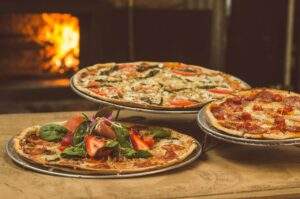Crafting Culinary Spaces: Inspirational Ideas for Restaurant Construction

Key Takeaways
- Understand the essential elements of successful restaurant construction.
- Explore innovative design tips that enhance customer experience.
- Learn the importance of sustainable materials in modern restaurant builds.
- Discover ways to integrate technology for efficiency and customer satisfaction.
- Find out how flexibility and adaptability can future-proof restaurant spaces.
Designing a restaurant involves considering functionality and ambiance to create an inviting and efficient environment. Including unique design elements and practical solutions can optimize workflow, improve guest comfort, and elevate the atmosphere. This approach fosters creativity, encourages customer interaction, and contributes to the business’s success.
Identifying the Core Elements of Restaurant Construction
When embarking on the journey of restaurant construction contractor projects, focusing on more than just the structural components is crucial. Effective space planning is vital in crafting an environment that enhances customer experience while maintaining operational efficiency. Strategically allocating space for kitchens, dining areas, and administrative functions ensures that each part of the restaurant serves its purpose without encroaching upon other areas. A well-organized layout can significantly improve staff workflow while creating a welcoming atmosphere for guests.
This involves thoughtful design, where the balance between aesthetics and functionality is key. Innovative architectural designs, coupled with expert input from seasoned architectural consultants, help optimize the utility of every square foot. From ambient lighting to strategically placed partitions, each element in the blueprint must serve a cohesive purpose to facilitate efficiency and comfort.
Innovative Design Tips to Enhance Customer Experience
Restaurant design significantly influences guest perception and is crucial in construction. It involves prioritizing lighting, acoustics, and seating arrangements to create a comfortable and inviting atmosphere. Open kitchens and communal tables create transparency and engagement, making dining a participatory experience. The design blurs the lines between the kitchen and dining area, showcasing culinary talent and building trust with patrons. This immersive ambiance leaves lasting impressions.
Sustainable Materials: Building for the Future
Sustainable materials in restaurant construction minimize environmental impacts by using recycled, locally sourced materials. This approach taps into the growing eco-conscious market, reducing carbon footprints and promoting healthier indoor air quality. Sustainable practices align with consumer values and ethics, elevating a restaurant’s brand image, fostering client loyalty, and promoting a competitive market. This approach propels business growth while promoting an eco-friendly environment.
Integrating Technology for Efficiency and Customer Satisfaction
Technology is revolutionizing restaurant construction, transforming operations and customer experiences. It’s changing the dining landscape with self-order kiosks, interactive digital menus, and contactless payment systems. Smart appliances in kitchens optimize energy use and workflows, reducing operational costs. Restaurants are also using technology for analytics to gain insights into customer behavior, transforming dining from a transaction to an enriching, memorable experience.
The Role of Flexibility in Modern Restaurant Designs
Modern restaurants require flexibility in design to adapt to changing market demands. Using movable walls, modular furniture, and multifunctional spaces allows for easy layout reconfiguring for diverse customer needs. This maximizes service potential and opens up new income streams by hosting varied event types. A flexible design framework ensures a restaurant remains relevant and competitive.







